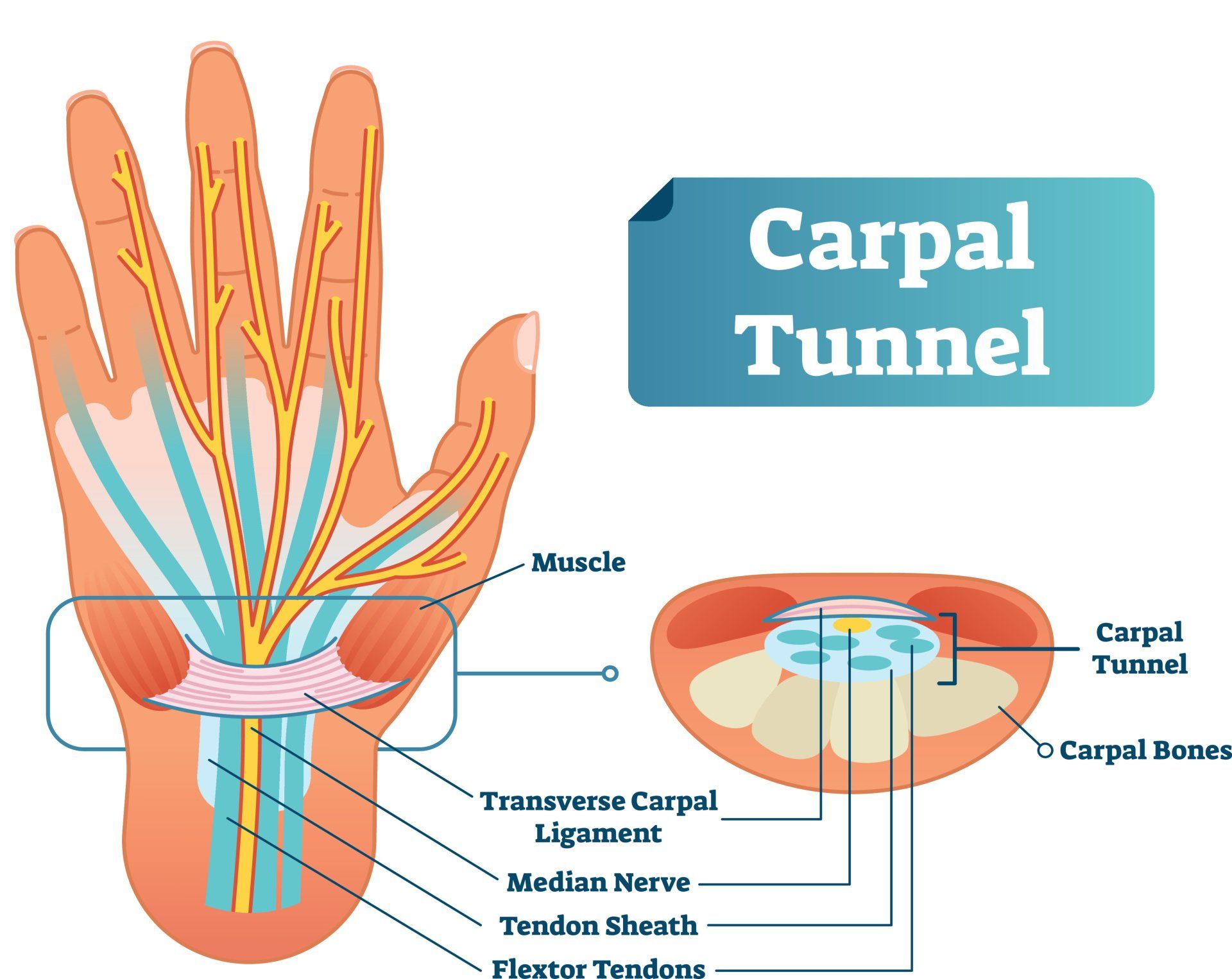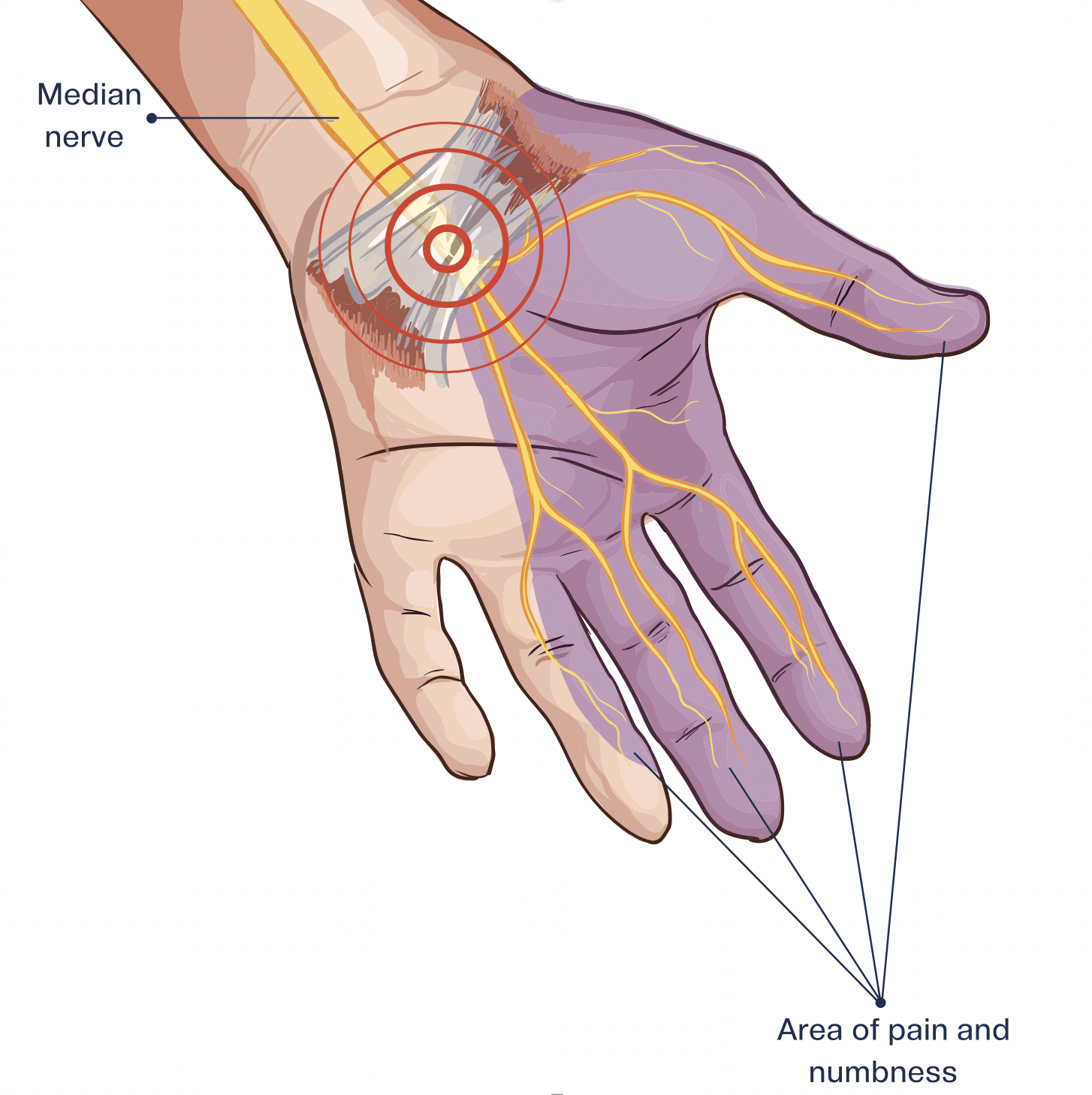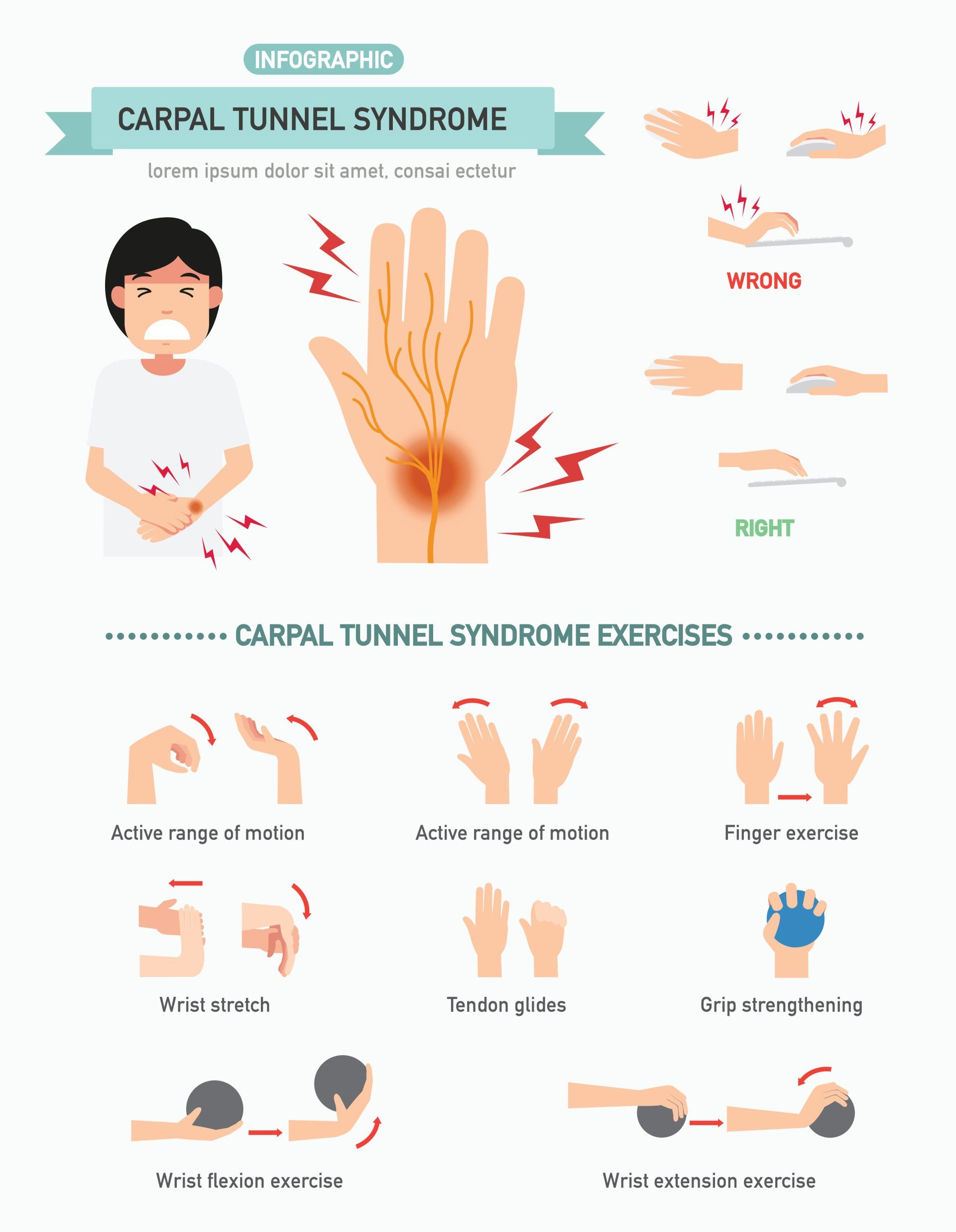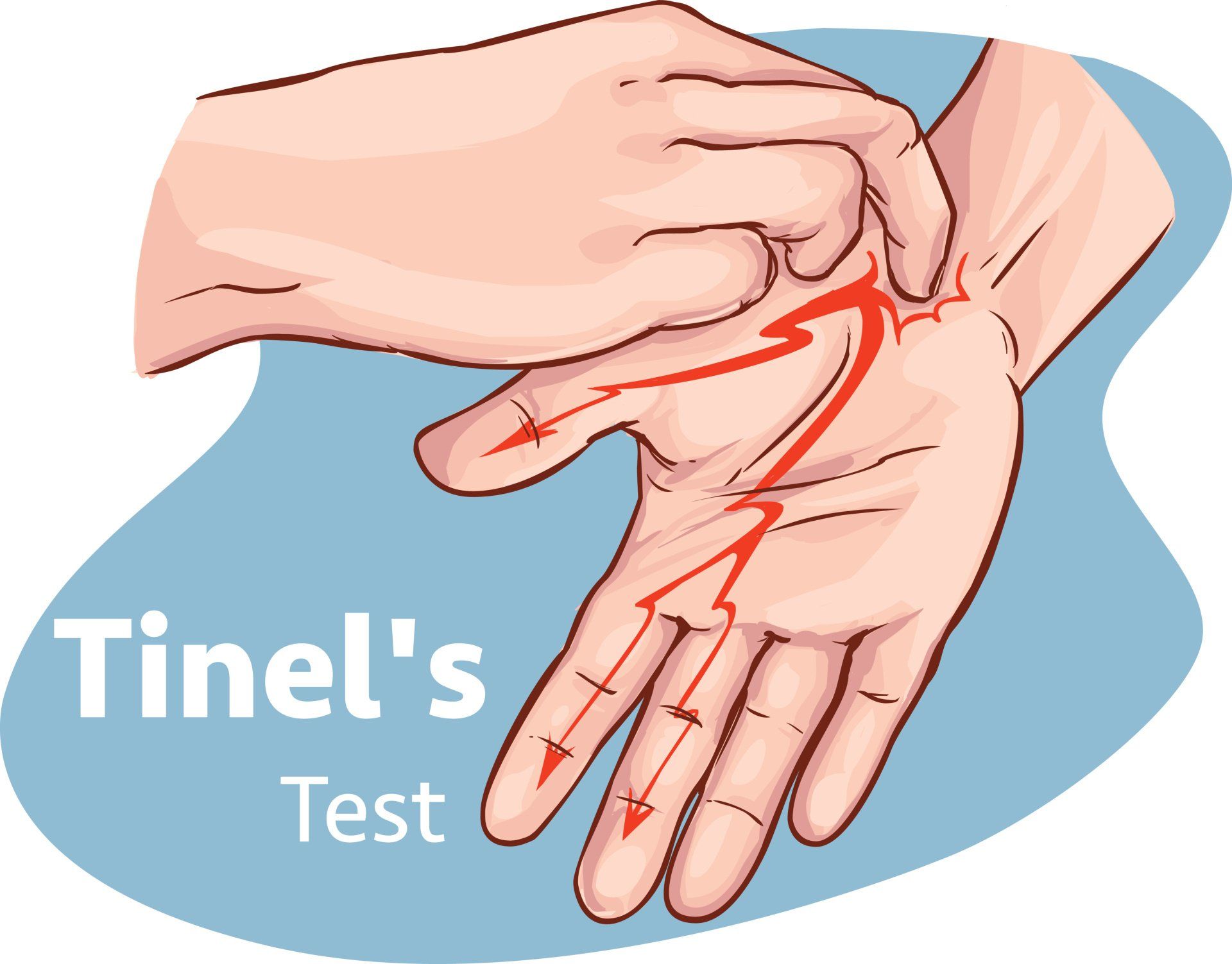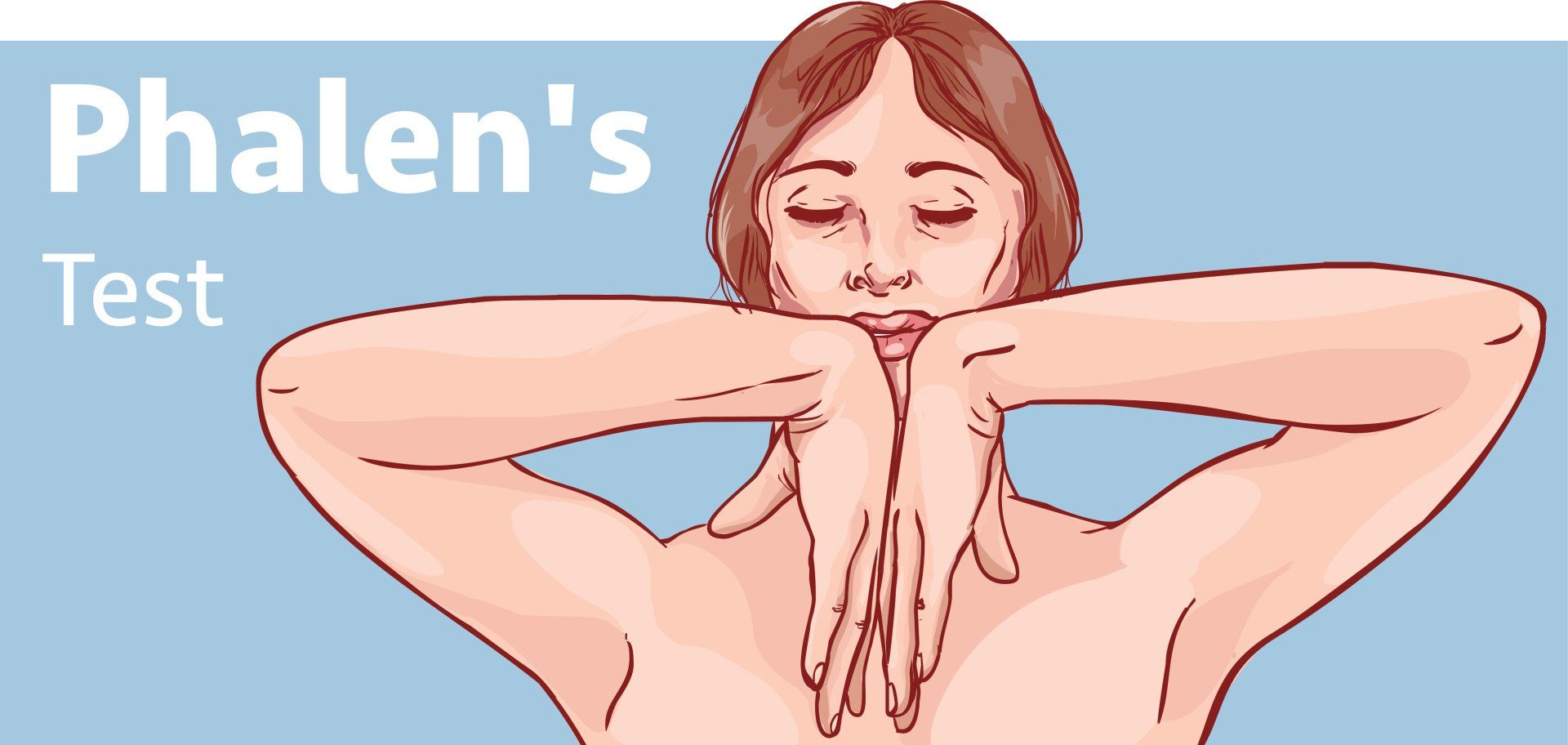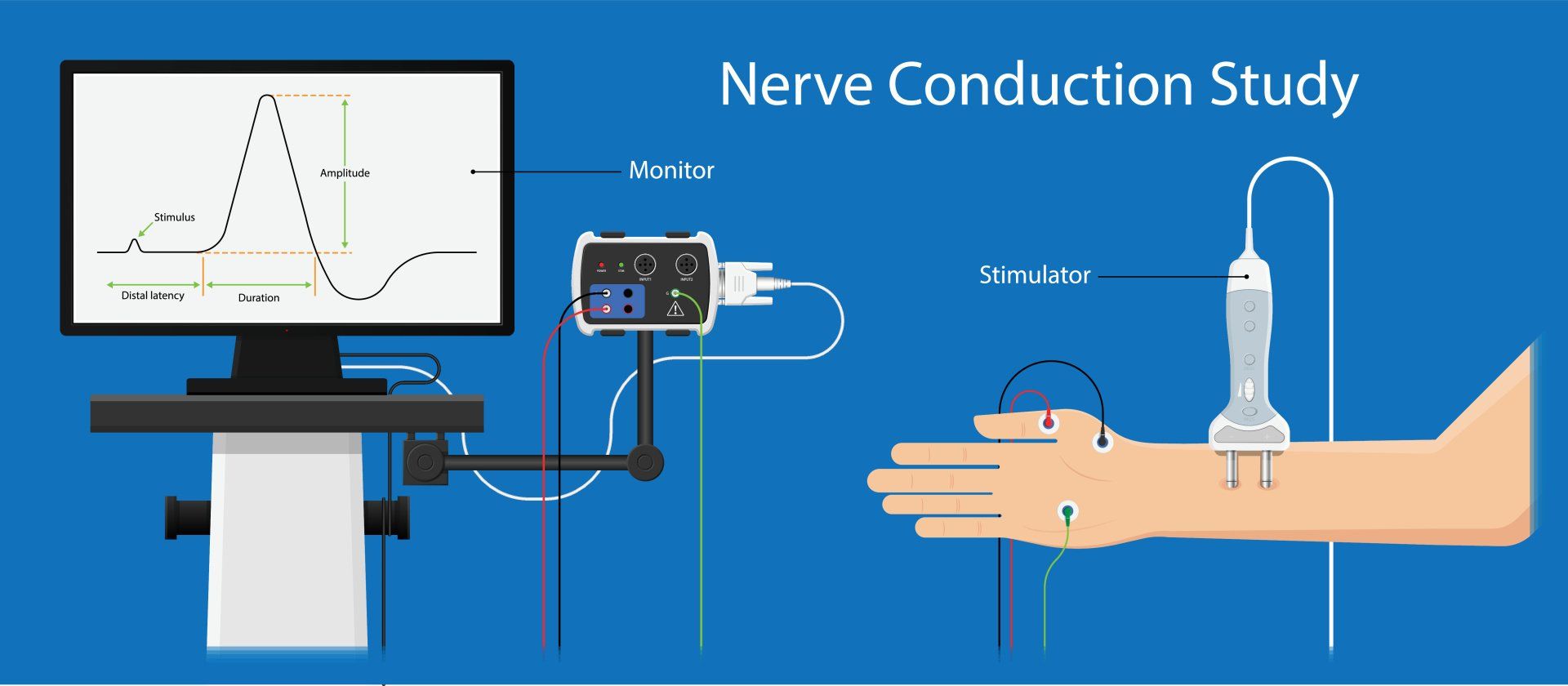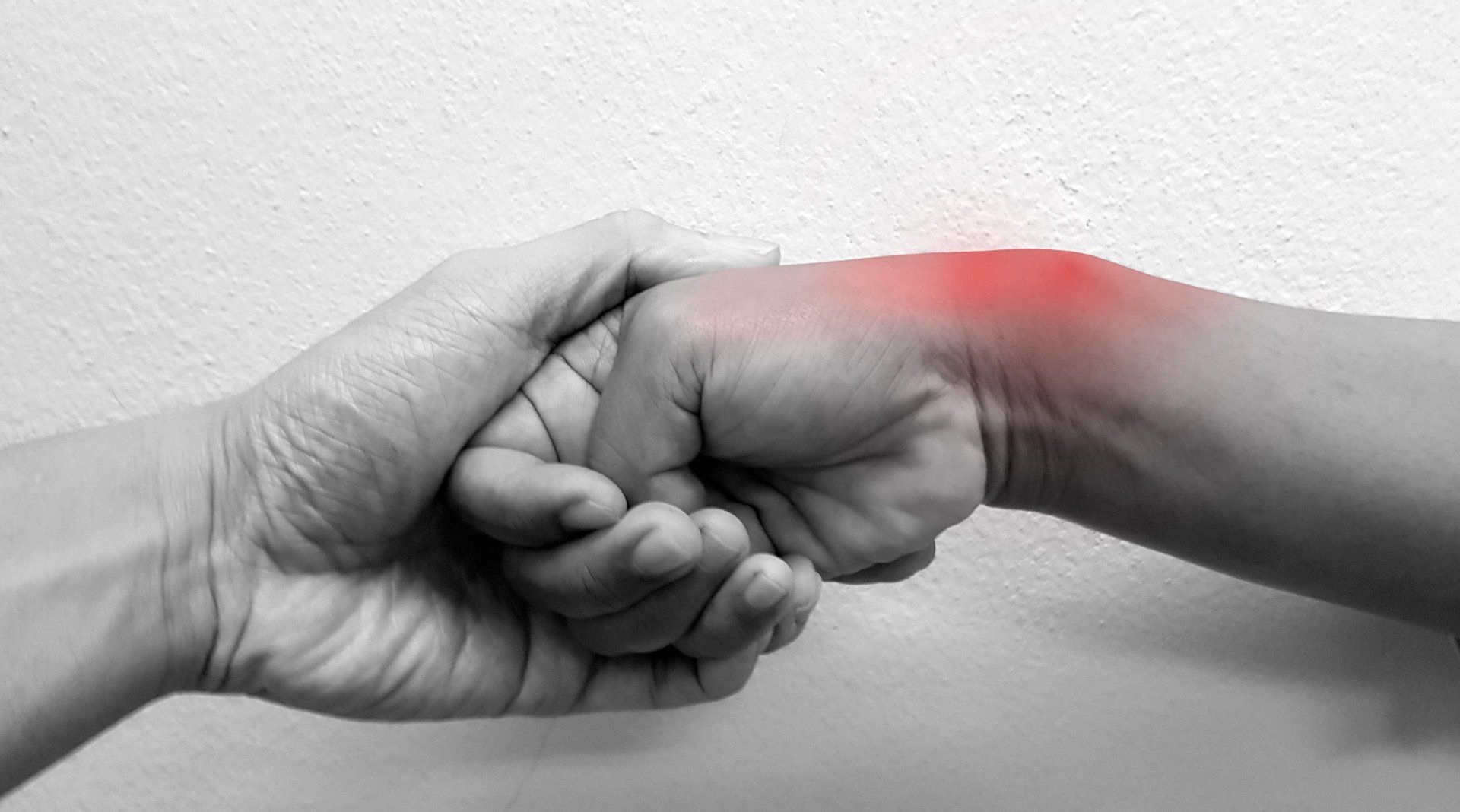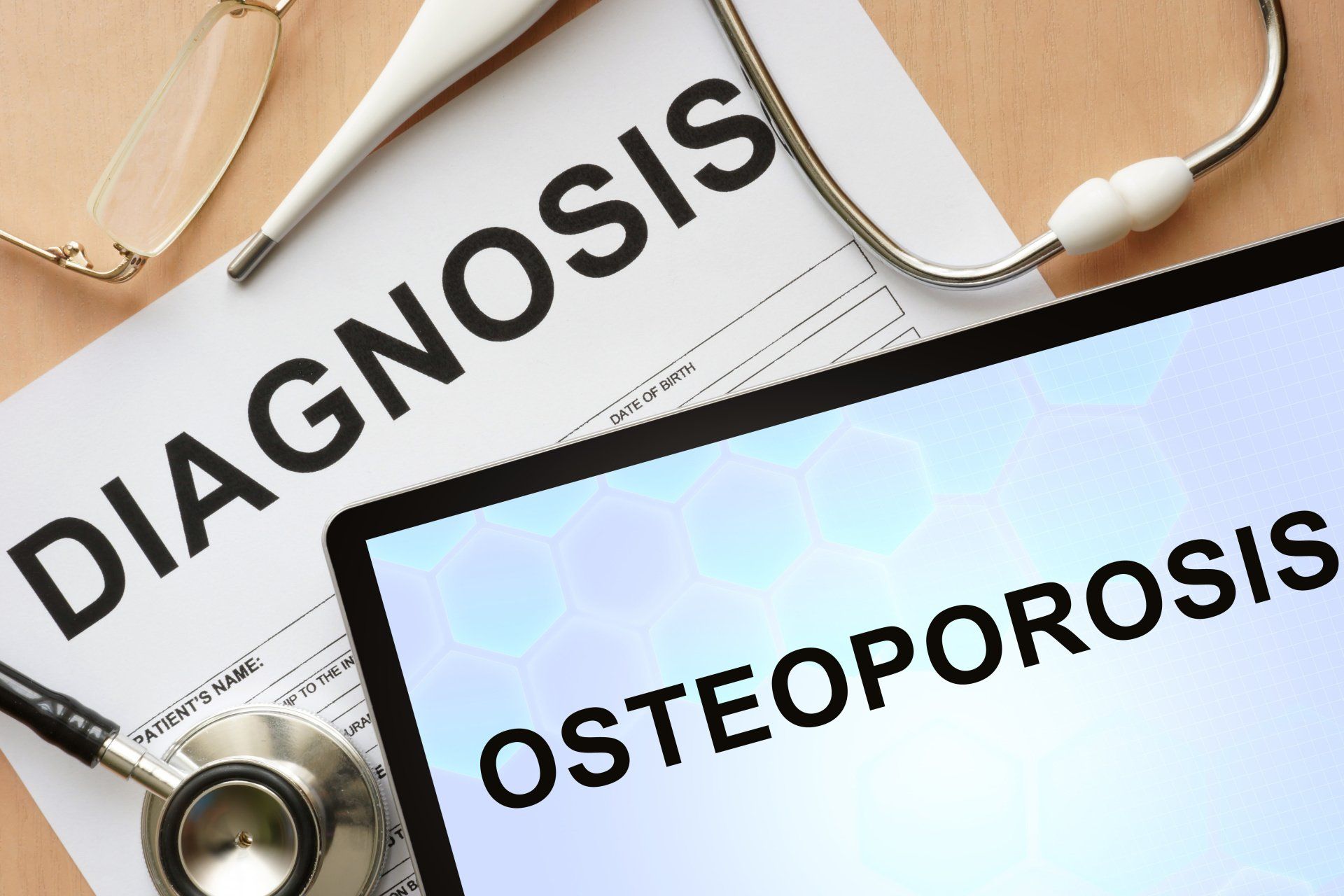Carpal Tunnel Syndrome
Introduction
- Carpal tunnel syndrome is a common condition that causes numbness, tingling and weakness in the hand specifically affecting the thumb, index and middle fingers:
- The little and ring fingers are not affected as they are supplied by another nerve called the ulnar nerve
- It is the commonest cause of peripheral nerve entrapment
- It is caused by compression of the median nerve as it passes from the forearm into the hand through a passage called carpal (i.e. wrist) tunnel
- The median nerve is one of three main nerves that supply the upper limb:
- The other two nerves are the ulnar nerve and the radial nerve
What is the carpal tunnel?
- The carpal tunnel is a narrow canal in the wrist
- It is formed by the carpal (wrist bones) and the transverse carpal ligament which is a tight strong structure that keeps the tunnel together
- Through the tunnel pass:
- 9 tendons that flex the thumb, fingers and hand
- Median nerve
What is the function of the median nerve?
- The function of the median nerve in the hand is:
- Supplies sensation to the thumb, index, middle and half the ring finger
- Controls the muscles of the thumb
- These functions are therefore affected pending on severity of the carpal tunnel syndrome
Pathophysiology
- The carpal tunnel is a small space which doesn’t have the ability to expand in volume
- Therefore, anything that occupies more space in the tunnel increases the pressure on the nerve
How often does it occur?
- It is the most common cause of compression neuropathy (accounts for about 90% of them) and one of the commonest causes of pain in the hand and wrist
- It affects around 3-5% of the adult population
- Most commonly occurs between 35-60 years of age
- Women are three times more likely to get it than men
Symptoms
- In most cases the symptoms come on gradually without a specific event to set them off such as trauma
- At the beginning the symptoms are intermittent but then become more frequent, lasting longer and eventually may become constant
- Altered sensation (numbness, tingling, burning) in the distribution of the median nerve which is the thumb, index, middle and half of the ring finger which is closest to the middle finger
- The little finger is characteristically not affected as this is supplied by the ulnar nerve
- Many patients notice that their symptoms come on mostly at night waking them up when they feel the need to shake their hand which relieves their symptoms
- Weakness in the hand comes on at a later stage and can present itself by dropping objects unexpectedly and having difficulty performing fine movements such as buttoning the clothes
- Patients can find it difficult to write, type on a keyboard, handle small objects, holding a book to read, gripping the steering wheel whilst driving
- In more severe and chronic conditions the muscles around the thumb on the palmar side can waste away (atrophy)
- ~60% of people have symptoms of carpal tunnel syndrome in both wrists
Risk factors
- Repetitive strain injury is a common cause of carpal tunnel syndrome:
- Repetitive wrist motions in occupations like typists, manufacturing, construction work
- Regular use of vibrating tools or those that require forceful movements
- Older age (rarely seen in under 20s)
- Women are three times more likely than men
- Pregnancy (the symptoms tend to go away following delivery of the baby)
- Obesity
- Diabetes
- Low thyroid levels (hypothyroidism)
- Rheumatoid arthritis
- Previous wrist fracture
Diagnosis
- History and examination are very suggestive of carpal tunnel syndrome
- Altered sensation in the median nerve distribution which covers the palm and the palmar aspect of the thumb, index and middle fingers
- Xrays:
- They can help rule out bony trauma or arthritis in the wrist
- Tinnel’s test:
- Tapping on the median nerve over the wrist joint sends electric shocks down the fingers innervated by the median nerve
- Phalen’s test:
- Patient is asked to put their forearms out in front of them in a horizontal position and press the back of their hands together to cause maximal flexion (bend) of their wrists for 30-60 seconds
- The test is positive for carpal tunnel syndrome if this reproduces their symptoms of numbness and tingling in the thumb, index and middle fingers
- Durkan’s test:
- Direct thumb pressure over the carpal tunnel for 30 seconds causes numbness and tingling in the median nerve distribution
- Is the most sensitive test for carpal tunnel syndrome
- Nerve conduction studies (NCS):
- It involves placing small electrodes on the skin and sending small electrical impulses that are then transmitted by the nerve being examined
- Provides a detailed analysis of how well a nerve is functioning by measuring how fast the electrical signal travels down the nerve
- The slower the speed the more damaged the nerve is
- They detect whether and to what degree the nerve has been damaged as well as helping to locate the site of nerve damage
- This will then help guide treatment
- Electromyography (EMG):
- This is similar to the nerve conduction studies but analyses the electrical activity produced by skeletal muscles
- Muscles contract in response to nerve stimuli from the brain
- EMGs measures how well the muscles respond to these nerve stimuli
- If muscle damage has occurred then the nerve compression is more severe
Treatment
- Conservative management is usually the first approach except in the more severe cases and includes:
- Wearing a wrist splint especially at night
- Antiinflammatory medication as such ibuprofen
- Steroid injections to the tunnel to help reduce the inflammation
- Improving any correctable factors such as diabetes and low thyroid levels
- Physiotherapy to help improve range of motion and strength in the hand, wrist and fingers
- Use of heat and cold compresses to relieve pain
- Optimising working environment to minimise repetitive strain injuries such as:
- Sitting correctly on a chair at the right height and distance from the desk
- Wrists should be in straight line with the forearms which should not be resting on any prominence such as the edge of the desk
- Forearms should be horizontal
- Carpal tunnel syndrome tends to deteriorate slowly but if treated appropriately and promptly it can help cure it
- Surgery involves releasing the tight transverse carpal ligament which is termed carpal tunnel decompression:
- This is a very common and highly successful operation (>90%) that is done as a day case procedure
- It can be performed under local/regional anaesthesia and so the patient remains awake
- Acts to release the pressure on the nerve
- The more chronic and advanced the carpal tunnel syndrome prior to the operation the longer it takes for the symptoms to recover
Prevention
- Take frequent breaks when carrying out repeated activities
- Stretch regularly
- Avoid poor posture as outlined previously
- Keep neutral wrist position and avoid extreme positions of wrist extension and flexion
- Avoid unnecessary and excessive force when carrying out a task:
- It is frequently noted that patients put unnecessary extra force than what is required to carry out a task
- Reducing the frequency and the force of gripping items in a flexed position
Further helpful information can be found here on:
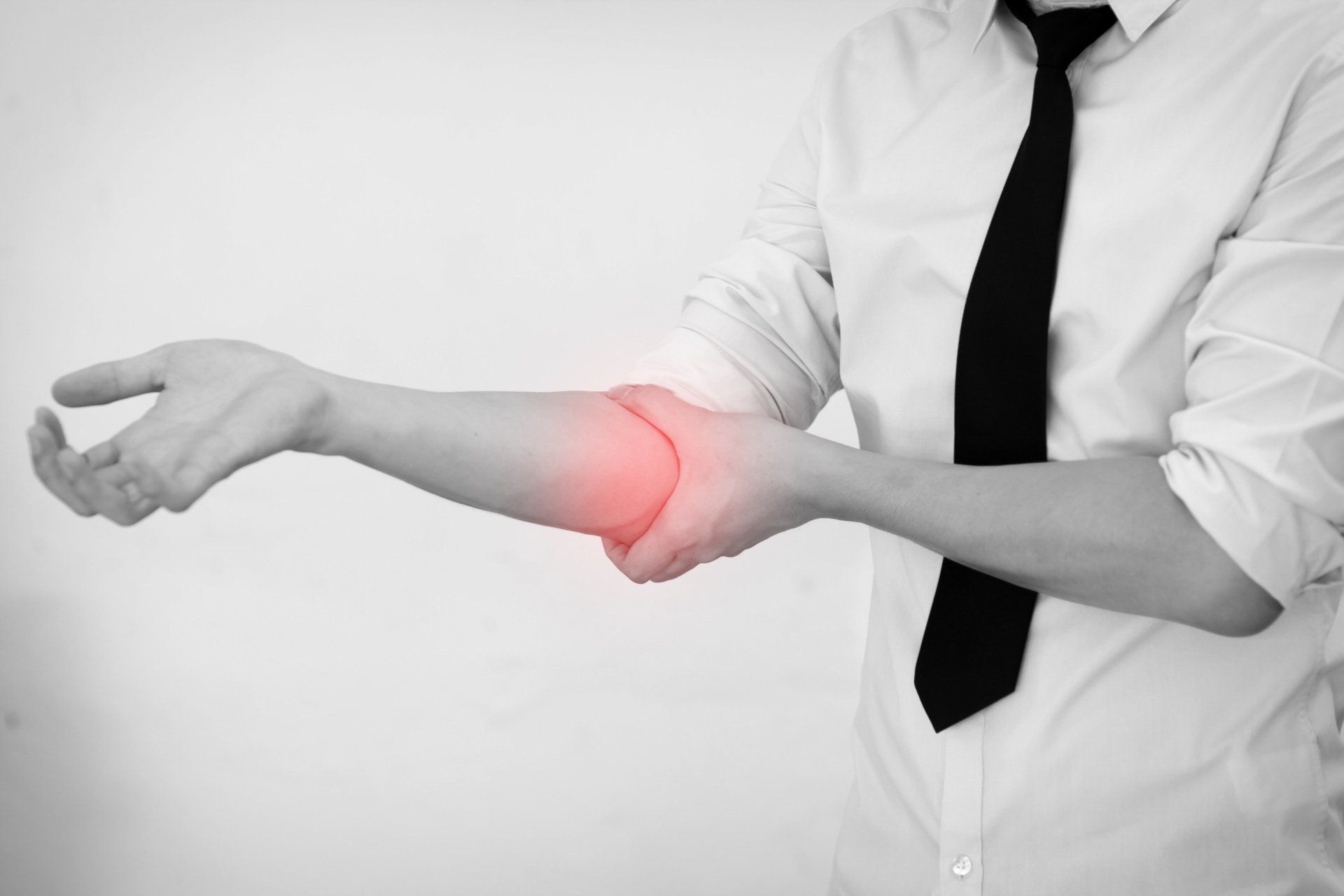
Introduction Cubital Tunnel Syndrome occurs when the ulnar nerve is compressed within a tunnel on the inner (medial) side of the elbow just behind the bony prominence of the inner aspect of the elbow called the medial epicondyle Cubital Tunnel Syndrome is the second most common cause of peripheral nerve compression: The most common one being carpal tunnel syndrome (compression of the median nerve at the wrist) The ulnar nerve is one of the three main nerves of the upper limb: The other two nerves of the upper limb are the median nerve and the radial nerve The ulnar nerve travels from the neck past the elbow and wrist and into the hand: Along the way it travels past some narrow areas where it can be constricted and cause symptoms for the patient The most common site of ulnar nerve compression is in the cubital tunnel at the elbow The second most common site is in Guyon’s canal in the hand When someone accidentally hits the inner side of the elbow (often termed hitting the funny bone) they get a sharp tingling sensation on the inner side of the elbow and forearm: This occurs because the ulnar nerve was hit at the site of the cubital tunnel where the nerve is close to the skin surface and therefore easily injured from outside forces
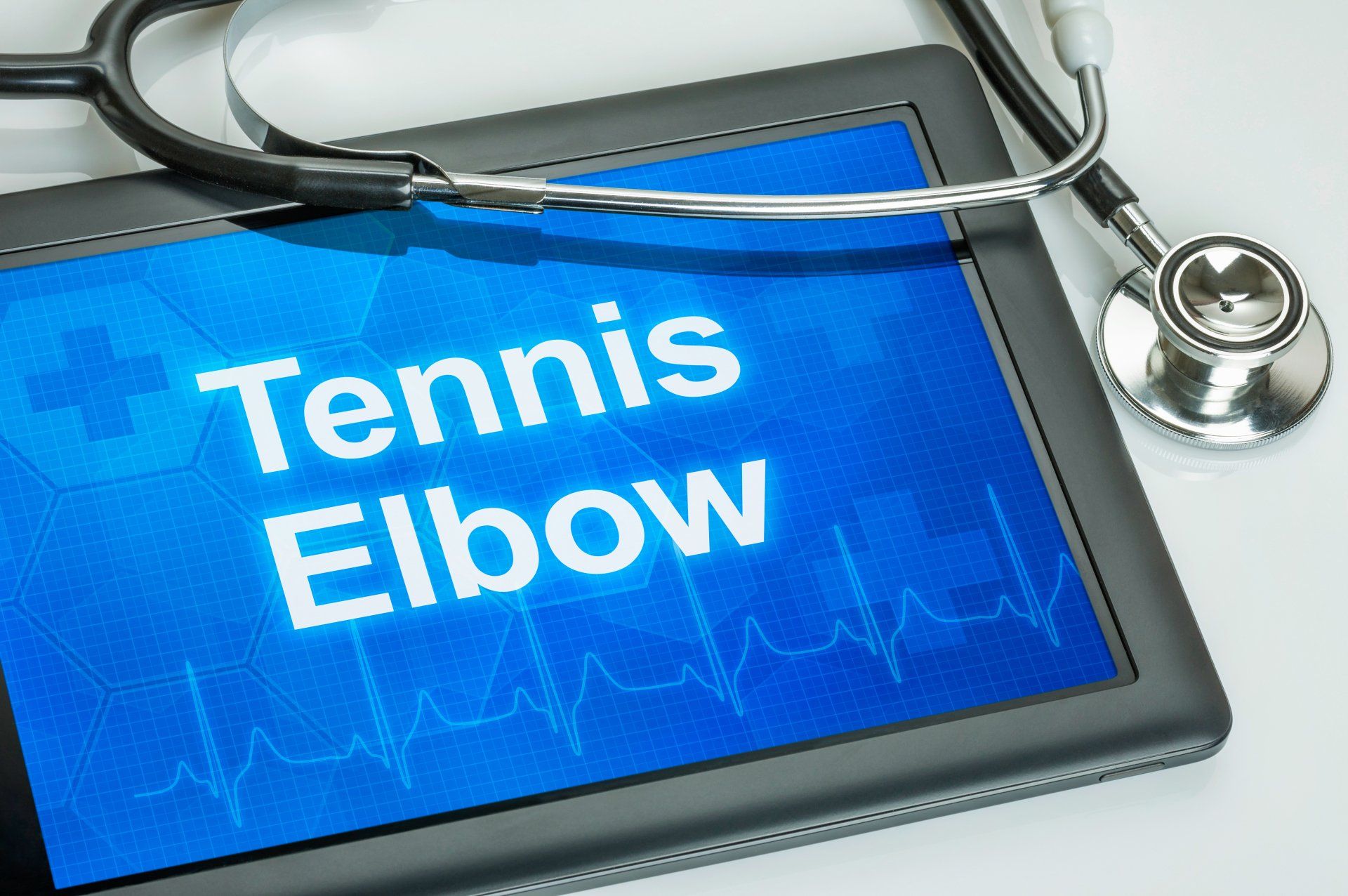
Introduction Tennis elbow (also known as lateral epicondylitis) is an overuse injury of the forearm tendons that originate over the lateral epicondyle of the humerus (bony prominence on the outside of the elbow) and act to bring the wrist backward away from the palm Whilst tennis players are particular prone to this condition it does not occur exclusively to them

Introduction This term is also known as repetitive motion or stress injury and occurs as a result of carrying out the same motion repeatedly over time causing injury to muscles and tendons It is associated with repetitive tasks, sustained or awkward position, forceful exertion, vibration or compressive forces It can affect almost any joint in the body Most commonly affected areas are hands, wrists, shoulders and neck It is thought to affect 5-10% of the general population but can be as high as 20-40% in specific working populations





